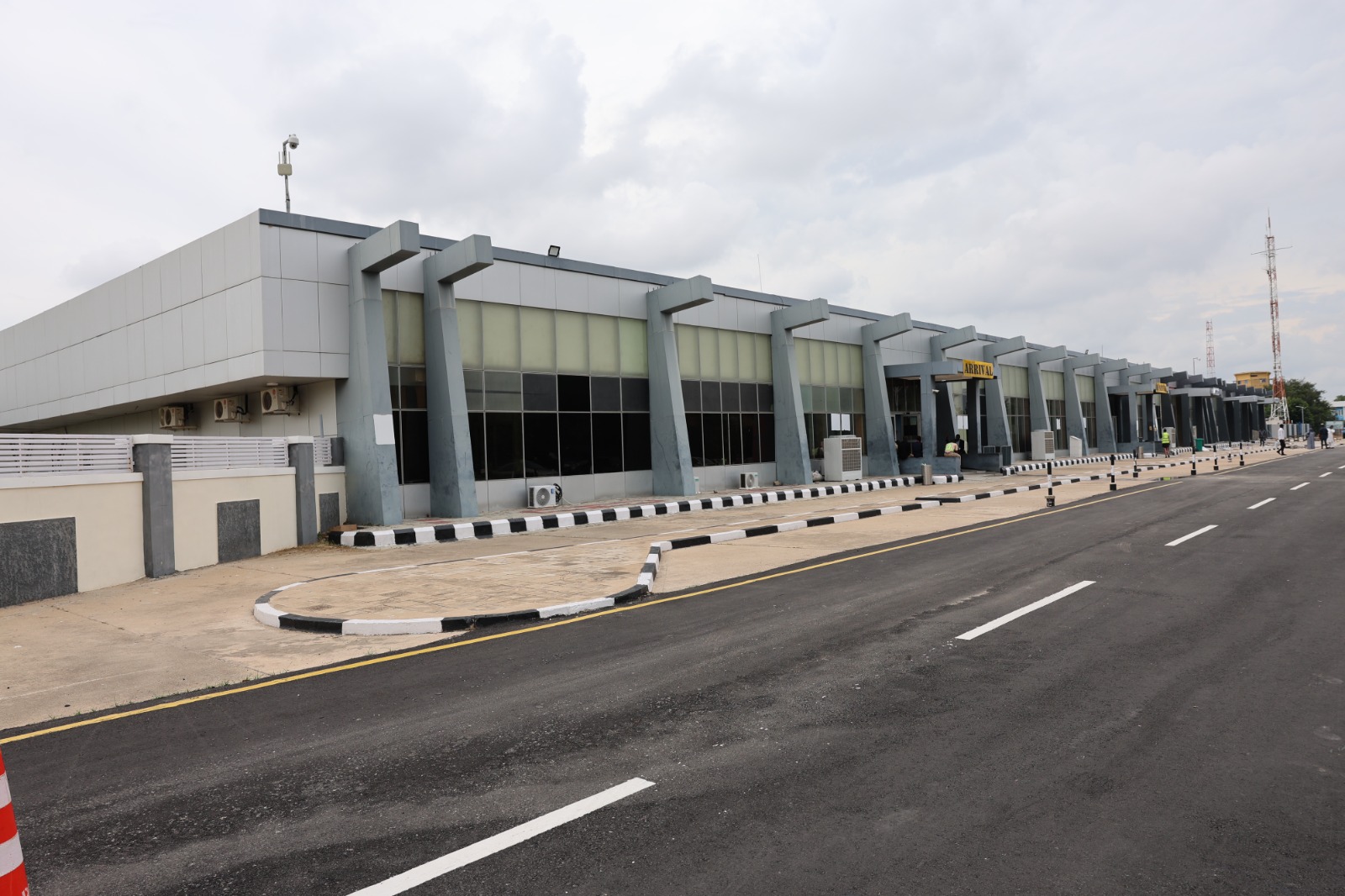How Maiduguri Int’l Airport Is Poised to Transform Regional Connectivity

In the heart of Nigeria’s North-East, the Maiduguri International Airport (MIA) in Borno State is quietly undergoing a transformation – one that seeks to turn a regional aerodrome into a strategic gateway for passenger, cargo and humanitarian operations.
According to terminal manager Ibrahim Bello, the renewed focus is far more than cosmetic: it hinges on modernising infrastructure, boosting capacity and leveraging Maiduguri’s unique geography to link Nigeria with its neighbours. In his words:
“The terminal-extension came up when the Governor saw the passion to collaborate with FAAN, with the Aviation Ministry … Later we went to the Government House … what is on-ground, what is not on-ground, what needs to be upgraded, what needs to be provided.”
This initiative comes at a time when Nigeria’s broader airport landscape is marked by stark contrasts: sprawling networks, under-utilised assets and a handful of profitable hubs overshadowing many loss-making terminals. Against that backdrop, Maiduguri’s story is compelling – and timely.
Nigeria’s State-Owned Airports: A Landscape of Imbalance
Nigeria’s state-owned airports, managed principally by the Federal Airports Authority of Nigeria (FAAN), illustrates the scale of the infrastructure challenge. Only a small number of airports generate profits; many others remain under-utilised and costly to operate.
FAAN has conceded that just three out of its 22 airports are currently profitable. Further, a 2024 analysis found that 16 airports contributed a mere 3.6 per cent of FAAN’s revenue, while just four airports accounted for 96.4 per cent. In 2021, cargo volumes for all Nigerian airports combined were measured at just 1.56 million ton-kilometres, a modest figure given the size of the economy.
Simultaneously, the air-freight market in Nigeria is forecast to reach USD 11.32 billion by 2030 from USD 8.18 billion in 2025 – a compound annual growth rate (CAGR) of 6.7 per cent. The challenge is clear: turning sizeable infrastructure into high-utilisation, commercially viable operations. Maiduguri’s upgrade thus merits attention as one of the few airports in Nigeria’s interior seeking to buck the trend.
MIA: Upgrades, Strategy and Potential
At Maiduguri, the refurbishment and strategic repositioning proceed along multiple fronts.
Modern infrastructure and increased capacity
Bello outlines how the Borno State Government, in concert with FAAN and the Ministry of Aviation, initiated a terminal-extension project informed by detailed facility audits. The state government undertook structural construction, while FAAN supplied equipment, seating, screening machines, baggage belts and carousels.
The result is a terminal with a passenger-holding capacity of around 500 persons at once, compared with the previous sub-300 capacity. This jump in capacity means multiple airlines can operate concurrently without overstretching facilities.
The airport boasts a 3,000 m × 60 m runway (orientation 05/23). The upgrade also encompasses digital check-in counters with integrated weigh-scales, replacing older analogue systems, and modern seating and screening equipment.
Strategic geography and regional hub aspiration
Maiduguri is uniquely positioned: it lies proximate to three neighbouring countries – Chad, Niger and Cameroon. Bello emphasises the implication:
“Maiduguri is strategically situated; … It is the only airport that has borders with three countries, that is Chad, Cameroon and Niger … This gives us an edge.”
With this border-region advantage, the airport is pursuing a “regional-hub” model rather than simply mirroring the Lagos/Abuja passenger-volume strategy. Discussions are underway about initiating flights to N’Djamena (Chad) and possibly extending to Bangui (Central African Republic).
Cargo and humanitarian operations
Beyond passengers, Maiduguri already serves a robust humanitarian-airlift role: agencies such as the World Food Programme, Médecins Sans Frontières (Doctors Without Borders) and the International Committee of the Red Cross (ICRC) use the airport, alongside helicopter services (up to five movements a day) that facilitate operations in the region.
In terms of cargo potential, Bello notes: “There is a lot of cargo traffic here, in terms of livestock and food-stuff … The trade routes from Maiduguri to N’Djamena, Cameroon and Niger present huge cargo advantages that can be enhanced.”
Although precise tonnage data for Maiduguri is scarce, the national air-freight market growth suggests the region could capture significant value, particularly from agriculture, perishables and regional trade. The airport’s upgraded infrastructure and supportive state governments (Borno and neighbouring Yobe) are actively reaching out to investors and cargo-operators.
Current airline operations and future projections
At present, scheduled commercial passenger services remain limited. According to available route-data, the airport appears connected only domestically (not yet internationally) with flights to Abuja, Nigeria’s capital, and very few direct non-stop destinations.
Nonetheless, the route-analysis conducted by the station team shows regional operations are feasible and potentially profitable. The ambition is to initiate routes linking Maiduguri with neighbouring capitals and cities, thereby unlocking new cross-border passenger flows.
Why This Matters and What Needs Attention
Maiduguri’s transformation matters for a number of reasons. First, it represents regional inclusion: the North-East has historically had lower connectivity, infrastructure investment and trade-volume than the southern metropolitan corridors.
By upgrading an airport in this zone, the region’s prospects for economic uplift, trade and mobility improve. Second, in a national context where many airports operate below capacity and struggle financially, Maiduguri offers a different model: aligning infrastructure investment with geographic advantage, regional trade potential and specialised operations (cargo, humanitarian, regional passengers).
Still, challenges remain. Full international scheduled operations have yet to commence. Airline interest must translate into firm contracts and routes. Commercial viability is uncertain until passenger and cargo volumes scale sufficiently. The broader ecosystem – ground transport, border-customs efficiency, investor confidence – must align. And security concerns (given the North-East security environment) remain a material factor.
New Flight Path for the North-East
Through the lens of the interview with Ibrahim Bello and a review of available data, Maiduguri International Airport emerges not as a waving flag project but as a purposeful, region-tailored initiative: modernising terminal infrastructure, expanding capacity, and orienting towards regional linkages and cargo growth rather than simply chasing large-volume international traffic.
In doing so, it provides a template for what “airport strategy” might look like in Nigeria’s underserved regions: one that balances infrastructure with geography, trade, humanitarian need and realistic traffic potential.
If and when the regional routes lift off, the cargo volumes flow and full international operations commence, Maiduguri may well stand as the North-East’s aerial gateway – and Nigeria’s next frontier in aviation connectivity. Would you like me to pull in data on potential airline partners, cargo-operator interest or comparative airport models (in West Africa)?







